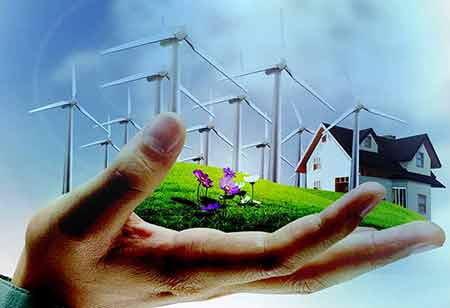Thank you for Subscribing to Energy Business Review Weekly Brief
Benefits Of Geothermal Energy
Just a few kilometers beneath our feet lies enough energy to potentially meet all of humanity’s requirements.

By
Energy Business Review | Wednesday, August 24, 2022
Stay ahead of the industry with exclusive feature stories on the top companies, expert insights and the latest news delivered straight to your inbox. Subscribe today.
It is the energy of the Earth’s heat. While it still plays a marginal role in the world energy scene, it may become one of the protagonists of the energy transition to green sources.
Fremont, CA: Geothermal energy is long-lasting, safe, reliable, increasingly low risk and brimming with untapped potential. In addition, it is silent, always available, has little influence on the landscape, and is versatile. It can even be utilized for cooling and creates more jobs than any other green energy.
Just a few kilometers beneath our feet lies enough energy to potentially meet all of humanity’s requirements. It is the energy of the Earth’s heat. While it still plays a marginal role in the world energy scene, it may become one of the protagonists of the energy transition to green sources.
Always available Aside from being essentially unlimited like many other renewables, geothermal energy is always available. It is not impacted by whether it is day or night like solar energy and does not depend on season, climate or weather conditions like wind and solar power.
On average, a geothermal power plant will produce energy for around 8,600 hours a year, while in solar plants, the average is around 2,000 hours per year. We can therefore describe the rate of geothermal energy production as constant, at least in the short or medium term. This makes it more easily predictable and plannable.
1. Doesn’t require large spaces
Unlike the majestic expanses of large wind turbines and photovoltaic panels, geothermal power plants only require modest amounts of space. Regardless of whether it is a domestic system or a large-scale plant, most components (including the heat exchangers) are buried underground, with very little remaining above ground.
In homes, the heat pump is about the size of a household appliance, while in larger plants, the biggest components are the cooling towers, followed by turbines. The plants can visually impact the landscape in certain cases, but newer architectural designs mitigate this issue.
2. Silent Energy
At least while functioning at total capacity, geothermal power plants produce negligible and imperceptible noise levels. During the construction phase of the plants – including excavations – a certain amount of noise is inevitable, but once construction is complete, everything is silent. This applies to both domestic systems and outside larger power stations that have at most several turbines spinning.
3. It creates record numbers of jobs.
That is what the data gathered by the energy services manager, GSE, tells us: for the same installed power; geothermal energy creates more indirect employment than any other type of renewable.
In terms of numbers, that translates to 34 jobs per installed megawatt, much higher than the 19 created by wind power and the 12 by photovoltaic energy. In Italy alone, 2,000 gigawatts of installed power would guarantee permanent employment for 4,000 people and 30,000 other jobs.
4. Provides more energy for the same nominal power
Because delivery is constant, geothermal energy can work at full capacity non-stop (maintenance aside). This means that the resulting amount of energy will be the equivalent of the power multiplied by the hours of use. This is very different from photovoltaic, hydroelectric and wind systems, which rarely work at full capacity. So more energy is produced for the same nominal power.
5. Allows double recycling
Geothermal power optimizes resources. On the one hand, the plants have components that can be salvaged and reused at the end of the installation’s lifecycle. On the other, during operation, the flows are organized in such a way as to put any heat that can’t be used immediately back into the circuit using the steam pipes that power the plant, helping to save energy.
6. The plants are long-lasting, safe and reliable.
Both domestic and large-scale plants have very long average life spans – up to 80 to 100 years. This is extraordinary longevity compared to a domestic boiler, which normally lasts around 15 years. No fuels are involved also means there is no risk of fire, and our long experience with this type of system guarantees excellent reliability.
7. Requires very little maintenance
In the case of domestic use, geothermal plants do not require any special maintenance. As they are closed systems, the pressure of the fluid in the piping self-regulates and the number of electrical and mechanical elements that can break down is also very small.
8. The Earth’s heat can also cool.
We consider thermal energy and heating first and foremost when geothermal energy is mentioned. Nonetheless, geothermal plants are designed to both heat and cool. This is why, aside from in the large stations, geothermal power systems can be installed in almost any type of building: from homes to shopping malls, public buildings and sports centers. The only limit is that the location is favorable in terms of the characteristics of the Earth’s crust.
9. More advantages for the home
In addition to providing air conditioning in the summer and heating in the winter, geothermal energy has many other advantages when used in the home. For instance, it reduces overall energy consumption by between 30 and 70% because it can also do the job of a boiler, i.e., heat water for use in the kitchen and bathroom.






